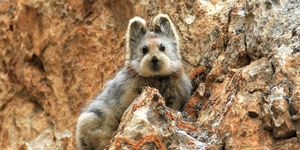Pitcairn Island is well known for being the landing place of the HMS Bounty in 1790. The crew, who had successfully carried out a mutiny against Captain William Bligh, needed refuge where they could not be pursued. The island seemed well suited since it was fertile, had fresh water and most importantly was located in an almost hidden corner of the South Pacific.

Over two hundred years later, it seems the island and its surrounding waters are still a sheltering place. The British government announced in mid-March that it intends to designate a vast area around the island as the world's largest protected marine reserve, assuring that the abundance of sea life, plants and geological features will remain pristine for generations to come. The plan to designate the region as a Marine Protected Area is spelled out in budget documents released by British officials, and is contingent on finalizing agreements for satellite monitoring and enforcement in the proposed ocean park. As long as there are no technical hiccups, restrictions will begin soon on a 322,000 square mile area around Pitcairn as well as her two sister islands which contains an unusual wealth of coral reefs as well as marine species ranging from sea mammals to sharks.
"It was like traveling to a new world full of hidden and unknown treasures," said Enric Sala, a marine biologist and explorer-in-residence for National Geographic who participated in a 2012 scientific expedition to the islands. Creating this sanctuary, he said, will ensure the biological bounty "will now be preserved for generations to come." Once enacted, the restrictions mean that the entire area will be off limits to commercial fishing as well as any kind of undersea mining and oil and gas exploration.
The area encompassed by the reserve is three times the size of Great Britain and will become the largest continuous piece of protected ocean in the world. As a nature reserve of any kind, the area is second only to East Greenland National Park, which remains the largest protected reserve in the world.
The famous British ship, the HMS Bounty, landed on Pitcairn in 1789 after the crew was led in a mutiny by the ship's Master, Fletcher Christian. The story of that rebellion was immortalized in books and the famous film "Mutiny on the Bounty. Eventually, nine of the mutineers ended up on tiny Pitcairn Island with an entourage of 17 Tahitian men and women and an infant. Christian burned the ship and built a settlement on the island, which remained undetected for 18 years. All but one of the original mutineers had died by the time the settlement was discovered by a passing American vessel in 1808.
The very remoteness that made it a good hiding place for a rebellious crew also makes it ideal for a sanctuary, scientists say. Pitcairn's waters are virtually unspoiled. The main island's current population of 56 people - all descendants of the mutineers and their Tahitian companions - are the only inhabitants, and large portions of the seabed have never been explored. So far more than 1,200 species, including four types of endangered whales and two endangered sea turtles have been documented. The region's ecosystem also includes the world's deepest known plant species, a kind of encrusting coral that thrives at 1,200 feet below sea level, as well as a coral atoll known as the 40 Mile Reef, considered by scientists to be one of the most developed and deepest reefs of its kind anywhere.
In order to monitor and yet still protect the area, remote monitoring of the site will be supplied by the Pew Charitable Trusts, through its Project Eyes on the Seas program, which uses satellite tracking data to detect illegal fishing.









